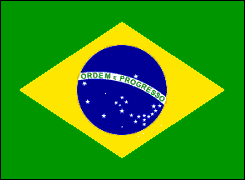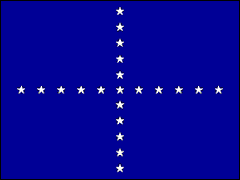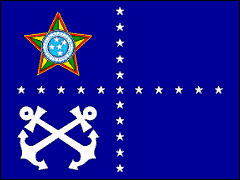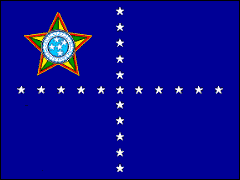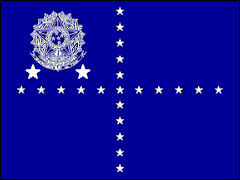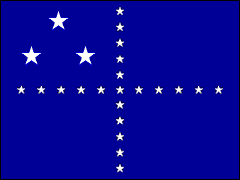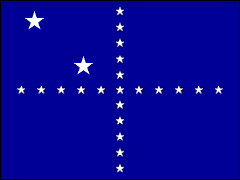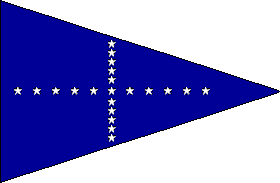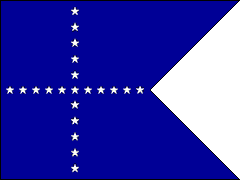|
UNITED STATES OF BRAZIL |
|
|
|
NAVAL
ENSIGNS & FLAGS • WORLD WAR II |
Brazil declared war on Germany and Italy on 22 August 1942 and thereafter the Brazilian Navy played an active role in the South Atlantic antisubmarine campaign. The Navy's major warships, the US-built battleships Minas Gerais and São Paulo, were little employed during the war. However, two scout cruisers constructed in 1908-09, Bahia and Rio Grande do Sul, were refitted with US assistance and saw much service as escorts and patrol vessels. The Navy's destroyers and corvettes, though elderly, were also refitted with US assistance for service as convoy escorts. In 1943-44 these old ships were partially replaced by US Cannon-class destroyer escorts and PC-461-class submarine chasers. War losses included the Bahia (sunk by an accidental explosion), the auxiliary ship Vital de Oliveira (torpedoed by a U-Boat) and the corvette Camaquã (collision). Counting losses from merchant vessels sunk, some 1,200 Brazilians were killed in the Battle of the Atlantic. The national flag (also the naval ensign) of Brazil, adopted in 1889 when the Empire gave way to the Republic, retained the green and gold imperial colors. The blue disc on the yellow lozenge displayed 21 stars as they appeared in the night sky over Rio de Janeiro at 20:30 hours, 15 November 1889, the day of the Republic's proclamation. The number of stars corresponded to the number of states of the federation: 20 plus the federal district including the national capital, Rio de Janeiro. The motto on the white band, ORDER AND PROGRESS, is a slogan of the Positivist political movement, which was influential in the republican revolution. The naval jack, called the Bandeira do Cruzeiro (Cross Banner) is meant to represent the Southern Cross, the most prominent constellation in the Southern Hemisphere's night sky. (All but a small portion of Brazil lies south of the Equator.) Its 21 stars corresponded to the number of states of the federation. The jack predated the Republic and originally it was also the flag of rank for admirals, exact rank being indicated by the mast from which it was flown: at the main by a full admiral, at the fore by a vice-admiral and at the mizzen by a rear-admiral. When the switch to steam and steel made this system obsolete, a distinctive flag for each rank was introduced. The design of the jack was also adapted for the commodore's broad pennant, the senior officer's pennant and the commissioning pennant. The flag of the Ministry of Marine was the jack with the central device of the national coat of arms in the upper hoist and crossed anchors in the lower hoist. The personal flag of the Minister of Marine was the same without the anchors. Flag Proportions: The naval ensign was proportioned 2:3. The jack and the appointment and rank flags had 3:4 proportions. |
|
|
